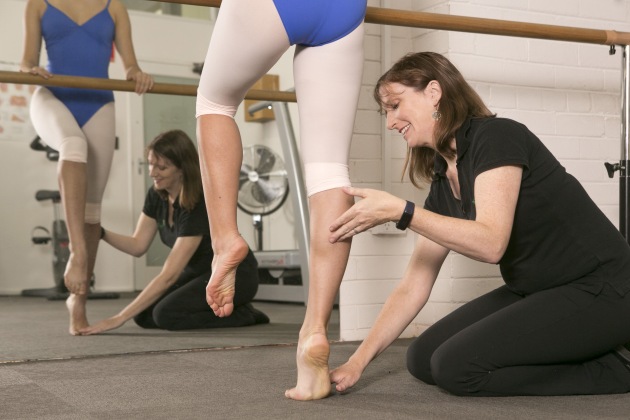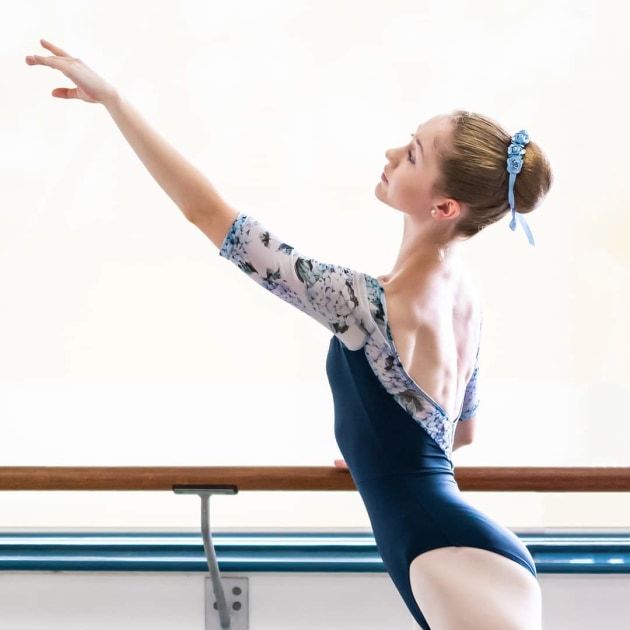Training interrupted

How much do long gaps in training impact on a dancer’s development? Susan Bendall finds out.
Artists who work with their bodies have been especially constrained throughout the many iterations of lockdown. The arts, in general, are financially almost on their knees. But when you are a dancer, you have to dance. Having to work in your bedroom, loungeroom or kitchen, week after week, has enormous impacts on your body, your mind and your artistry.
An especially vulnerable group of dancers are the young elite adolescents who are in full-time training at a crucial stage in their development, hoping to make dance their life. How do long interruptions to training affect such dancers’ chances? Will they impact on the progress of their technique or the development and maintainence of their strength? Can long breaks from training be career-ending?
This global pandemic is an unprecedented event; there aren’t any scientific studies that show the impact of pandemic lockdowns on a healthy dancer’s development. We can however learn from our experience with dancers whose training has been interrupted for other reasons, such as injury. For this article, I approached physiotherapist Gabby Davidson, a former dancer with The Australian Ballet and a physiotherapist at the Australian Ballet School and in private practice, who in her role has guided many dancers back to fitness following time out through injury. I asked her if a complete break from training can arrest strength and flexibility or if these can be regained.
“These are things they can regain, it will just take longer,” she says. “And the adolescent time is the important time.
So, where exactly are the age demarcations for having time out without losing out on milestone opportunities?
“At age 12 to 13, students have time to rebuild strength, though they are likely to face psychological frustrations of wanting to dance and progress,” Davidson says.
“If you’re 15 and you need to take time off, you will be a bit behind your peers, but it doesn’t mean you won’t get there – if you have the natural facility to do it.
“The only issue is if [the break] is around that critical time when you’re transitioning from being a student to a professional. Unless you have someone who was going to support you through that time and take the time with you – it wouldn’t be impossible but it would be really hard. At 18, a dancer should be ready to audition for a company. If an elite dancer had to take a year off [at that stage in their development], we would be making sure that they were doing as much as they could [around the injury]. This is where practices such as Pilates and Gyrotonic can make a huge difference.”
What is the impact of a lack of performance experience?
The issue is partly a psychological one – “what do they have to work for?”, explains Davidson. As she says, although performing is “the icing on the cake -- a big part of the performance is the work before it. Working on a role and getting the endurance is very important.”
Has she seen more injuries as a result of lockdowns?
To start with, she replies, 2020 and 2021 have seen different patterns of lockdown, and obviously various geographical areas have undergone more or less “hard” lockdowns where students are forbidden in the studio. Anecdotally, Davidson says “the biggest jump we’ve seen is in bony injuries – mainly because bones like consistent load and tendons like consistent load. So, for those who are going up and down ([in load] that gets tricky.
For elite dancers, there have actually been fewer injuries than in non-elite students. “The injury rate has stayed about the same this year and last year it went down because they weren’t doing as much as they usually do” she says. “The only thing that did spike was some stress reactions.”
At the ABS, the health team would advise teachers when a pupil’s load had to be modified. “It doesn’t stop the injuries, but it can stop them from becoming really bad. There is a silver lining to this,” she adds. “Some of the pressures are taken away. Some of the injuries are then given the time that they need to heal.”
One danger Davidson saw during lockdowns was students accessing classes via the internet. This was initially a problem because it couldn’t be monitored and students could overtrain. “We had to actually ask them not to access classes from outside.”
“Some of the on-line content was a little bit scary. Even things like someone demonstrating with 180 degree turnout or extreme range can influence young perfectionists to emulate.”

A lot of injuries were caused by the changes in the surfaces that dancers were working on. This applies especially outside of the elite field. “It’s okay if they’re dancing on concrete, but what they had to do was give themselves time to get used to it. Bones can jump on concrete, but we have to give them time to react to those forces and build up the strength to deal with it,” Davidson reports.
The other challenge is when students return to their studio. “The bones just can’t keep up with the change in surface and we started seeing increases in stress reactions and stress fractures – not traumatic fractures but those gradually building up.”
This year it has been tricky because the lockdowns have been on-again, off again, with students having to adjust frequently to differences in load, surfaces and duration of sessions.
Overall then, while injuries are a potential hazard, time out from dancing isn’t necessarily the end for a promising career. With a willingness to pull back and be patient and a focus on alternative forms of strengthening and conditioning, it is entirely possible to get back on track and closer to the stage.
This article first appeared in the Oct/Nov/Dec issue of 'Dance Australia'. Buy from your favourite dance retail outlet or go here and never miss an issue!


